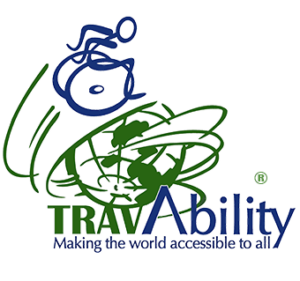Travelers with disabilities and their families represent a strong and growing market that can be captured by travel properties, destination marketers, wholesalers, tour operators and the retail tourism sector.
Customers who have specific access needs are part of every tourism ‘segment’. Their interests are as wide as any other group of people. They may be looking for mountain adventures, concert performances or a honeymoon hotel. In business terms, they are simply ‘customers’ but they need good access – otherwise, they will choose to go elsewhere. They also travel with family and friends. Through not marketing to travellers with a disability, tourism organisations risk not one customer but potentially many more whether it be family groups, groups of friends, wedding functions or corporate conferences. It is about recognising people with a disability as an inclusive part of the traveling society.
When we talk about mainstreaming Accessible Tourism, it is important that advertising and marketing reflect just that. Accessible Tourism is not a separate market segment but crosses all existing tourism markets. It is important to reflect people with a disability as just part of the scene of any destination or product marketing campaign.
Publish your accessibility information on your website!
One of the biggest problems for customers is to find the accessible establishments and offers in the general market place. Don’t let all your efforts be wasted. Even your first access improvements are worth announcing.
You don’t have to wait to publish until “everything” is done!
Remember you are addressing customers who plan well in advance in order to have a barrier free experience of tourism. This means you need to provide detailed and reliable information about accessibility in all your publicity material.
Think about your own establishment or tour and the kind of information you could include to encourage visitors with a disability to book with you.
Accessibility information should be part of your basic customer information:
- Reservations and customer enquiries
- Description of building and rooms
- Common facilities
- Offers
- Available transport services
- Nearby tourist venues and services.
Accessible communication
How easy is it for potential visitors with disabilities to access the information you provide?
Information must be legible, clear and simple. The following are some examples:
- Structure content in a logical order
- Use plain English and avoid long sentences
- Use large text. Large print should be at least 14 point, but 16 is best.
- Use clear typefaces such as Arial, Univers or Verdana
- Ensure contrast between text and background.
- Make all text left justified, to avoid large gaps between words
- Don’t use italics or capitals
- Use pictograms and symbols to help customers find information when there is a lot of text
- Use images which show a variety of visitors of different ages
- Offer audio alternatives such as MP3 files which can be easily downloaded and played on iPods, etc.
Your website can be a powerful tool for reaching customers with disabilities. The internet is already largely used by people with disabilities as it offers the potential of barrier free communication
Is your web site accessible?
Key benefits of having an accessible website are:
- When you plan a new website or upgrade, make sure your designer is familiar with WAI’s web accessibility guidelines
- An accessible website helps expand markets to not only people with disabilities but also people using older browsers, and new technologies such as mobile devices
- Search engine optimization – accessible websites have a distinct advantage in terms of being more clearly identifiable by search engines
- Improved usability – offering clear, consistent navigation which makes finding information easier and provides understandable and clear content which encourages people to stay longer and make return visits.
- Can help reduce your website maintenance costs
Accessibility Guide
The detailed checklists provide a guide on the sort of information that should be presented in an Accessibility Guide.
When preparing an Accessibility guide put yourself in the customers shoes and describe what you have to cater for a wide range of disabilities. Avoid saying something is accessible and don’t be afraid to include items that may not meet the full accessibility requirements of AS 1428 as long as you include critical details such as the width of doors, heights of toilet seats etc.
It is important to talk to your guests and learn what they consider to be the important things and modify your accessibility guide accordingly. Often your guest will point out things that could be made accessible with small and inexpensive modifications.
Customer feedback
Your existing or potential customers with disabilities and other access needs can provide valuable insight on how you can improve accessibility of your services. Use it!
Ensuring your services meet the needs of customers with disabilities or other groups with access needs, means that you need to continually review the accessibility of your services. It is a process which builds on customer satisfaction and feedback.
Here is what you can do to make the most out of your customers’ experience:
- Assign a manager or contact person for accessibility issues.
- Use short questionnaires for user satisfaction concerning venues and services.
- Include a section where guests can make recommendations for improvement.
- Put in place a clear complaints procedure for possible dissatisfaction with services.
- Handle customer complaints appropriately and promptly.
- Identify common issues and suggestions by customers and act on them.
- Publish information about the changes you have made based on customers’ feedback.
Make sure that your guests can comment on the accessibility of the facilities but also of your promotional material and quality of communication at all stages: enquiries, reservation, reception and use of services.




Leave a Reply
Want to join the discussion?Feel free to contribute!